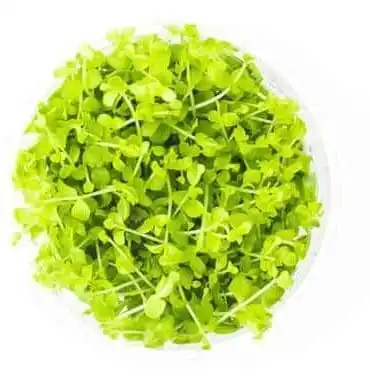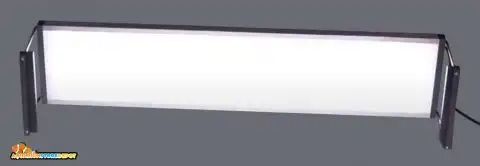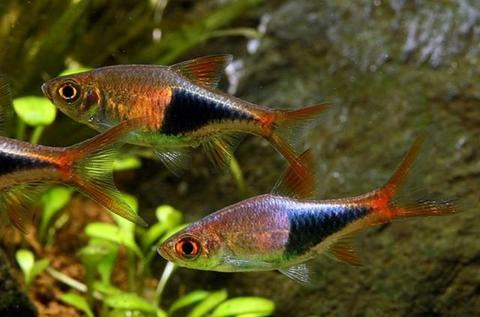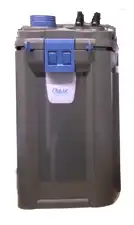Thank you for visiting! By the way… any links on this page that lead to products on Amazon and other stores/partners are affiliate links Aquarium Store Depot earns a commission if you make a purchase.
The Iwagumi Aquascape is a timeless aquascape style that is focused on stone formations and simplicity. If you are looking for an eye popping yet simple freshwater aquascape, the Iwagumi Aquascape is worth considering. It has a lot of history behind it and a specific aquarium brand dedicated to it.
It does have its challenges and complexity to it, which is the purpose of this post. In this post, I will provide you a how to guide for success on the Iwagumi Aquascape. I will explain the history of the style, its principles, and how to’s. I will even provide a sample high end shopping list for you to get started. As a quick disclosure, this post will include affiliate links for which I may make a small commission at no extra cost to you should you make a purchase. Now let’s get started!
Key Takeaways
- The Iwagumi Aquascape was the beginning of modern aquascaping
- It is a zen-like style that focuses on ground cover plants and rock placements
- CO2 is required to get the lush growth needed for this look
- Fertilization is required to maintain the growth pace of the groundcover plants
- Better lighting is needed to keep the ground cover from becoming leggy
The History Of The Iwagumi Aquascape

It originated in Japan by the pioneer Takashi Amano. Amano not only created the Iwagumi Aquascape, but also started Aqua Design Amano (ADA). ADA is considered one of the leading Aquarium Substrate developers and supplies of high end planted tank equipment. Amano is so well regarded in the industry that there are two species of Freshwater Shrimp named after him – the Amano and Yamato Shrimp.
The Iwagumi Aquascape technique derived from Japanese gardening concepts. The Iwagumi concept was published for the first time in the mid 1980s. His publication was the birth of modern aquascaping in the hobby. Taskahi Amano is considered the father of aquascaping by many on our hobby.
Concepts of the Iwagumi Aquascape
The Japanese Iwagumi Aquascape is based on the following principles
- Only one particular type of stone is used
- No driftwood or roots are used
- The main focus of the aquascape are the stones
- One type of plant
- One type of fish
- Does not use an even number of stones – odd number of rocks only
Stones
The Japanese Iwagumi style is primarily focused are on the stones. The aquascape is going to have an odd number of rocks – usually 3-5. The three stone Iwagumi style is known as a Sanzon Iwagumi.
The Sanzon Style

This is a minimal Zen like Japanese style Aquascape. 3 stones are used with one large stone and two smaller flanking stones. The name is likened to Buddhist triads. I’ll focus more on the traditional 5 stone Iwagumi, but want to define the Sanzon for those interested in it.
Traditional Style Stone Layout
With a Japanese Iwagumi Aquascape, every stone serves a function and has a name. Because of this, you have to keep in mind the purpose of each stone you select for the scape. The Stones in the traditional Japanese Iwagumi style are:
- Oyaishi
- Fukuishi
- Soeshi
- Suteishi
The following picture from Fish-etc.com illustrates the 5 stones:

Oyaishi Stone
The Oyaishi Stone is your Master Stone or KeyStone. The whole aquascape is centered around it. This is the main focal point of the aquarium. The Oyashi should be tilted. This is to represent the flow of water and create a natural look. It needs to be 2/3 of the height of the aquarium. This 2/3 ratio is attractive to the human eye as supported by the Rule of Two Thirds.
Fukuishi Stone
The secondary stone is name the Fukuishi. It is a visual counterpoint to the main stone. It needs to be placed at the left or right of Oyaishi. It should be of similar texture and same type of stone as the Oyaishi.
Soeshi Stone
Third stone is the Soeshi Stone and supports the impression of the main stone. Its role is to support the flow of the Iwagumi by strengthening the presence of the Oyaishi. It should be placed next to the Oyaishi along with the Fukuishi.
Suteishi Stone
Final stones in the Iwagumi style are the Suteishi and form the final details of the scape. These are also known as the sacrificial stone as it does not stand out in the aquascape and may actually be hidden by plant growth over time.
The Rule of Two Thirds
I mentioned the rule of two thirds earlier in this blog, so now I will explain it. The rule of two thirds was concepted by the ancient Greeks and have been used in all forms of artwork for thousands of years. It provides a guide on achieving balance with a work of art, which in this case includes aquascaping. It is actually easier to achieve this with an aquarium because we will use this rule on a two dimensional layout using the one major viewing angle of the aquarium. This will usually be the front of the tank. I provided a quick explanation video that discusses the rule of two thirds by Julian Discovers. There is no aquarium here, but this video should still help illustrate what it is.
We start the rule of two thirds by using four lines – two horizontal and two vertical that run through the tank. This splits up the tank into 9 equal sections. Where the lines cross is considered a golden focus of your aquascape. These mark where you should be placing your prominent pieces of your scape like your stones.
Stone Selection
Stone selection is everything with the Japanese Iwagumi style. They are your feature pieces. We consider the following factors when selecting our stones:
- Size
- Color (Or Colour for our European friends ^_^)
- Shape
- Texture
Size
Our prominent rocks need to be impactful. The need to be big enough to stand out in our Iwagumi style tank. An Oyaishi that is too small will not complete your scape while too big will overwhelm the entire aquarium. Aim for 2/3 size of your aquarium height for your Oyaishi
Color

There three main types of rocks used with traditional Japanese Iwagumi Aquascapes. We have Dragon Stone, which is brown. Seiryu or Mini Landscape rock is grey. There is also Black Seiryu and Millennium Rock available that are a darker grey or closer to black. Iwagumi rocks are expensive, but they are the foundation of your scape. It is worth spending on hardscaping to pull of an award winning look.
Shape
Know the feeling of the scape you would like to design. Do you want stream (smooth rock) look or a mountain range effect (jagged edges)?
Texture
Are you looking for smooth texture or want rocks with veins? The texture and placement of your rocks will change the feel of the scape. We call this tension vs. harmony.
Tension vs. Harmony
Let’s talk about what this is. The purpose of tension is to create visual interest and energy to our aquascape. Too much visual tension will pull the eye in all directions at once and hurt your design. To create tension, we put our stones at right angles or go with stones that are jagged or veiny.
Harmony is the togetherness and flow of our aquascape. It is smooth and goes with the flow of the water. To achieve harmony we place stones together and utilize stones that are smooth. Too much harmony and we will have a uniform, stale, and boring aquascape. We must mix a balance of tension and harmony in our aquascape to achieve a stunning piece.
Setting Up
After we find our rocks, I encourage people to setup a dry scaping area at your shop (if shopping locally) or to have an area setup to do this in your home. This can be done with cardboard if you don’t have one available
Start with a even layer of substrate across the aquarium. We will add more substrate after the stones are placed. To add depth, we can add more substrate at the back of the aquarium to create a sloped affect. Our stones and carpeted plants will prevent the substrate from evening out over time
Next place the Oyaishi. It is critical to place this first when setting up and it should be placed to be in accordance to the rule of two thirds. Place it at one of the focal points and make sure this stone is 2/3 of height of your aquarium and placed so it is about 2/3 of the width of your aquarium.
Place the Fukuseki then the Soeishi. Place the final piece – the Suteishi last. Pay attention to balance and angles using the tension vs. harmony concepts I explained earlier.
For an example Aquascape setup. See the video below by Love Aquascaping below:
Where are you viewing the aquascape. Consider where you are sitting and the viewing angle. Aim your peaks and valleys to your viewing angles. This develops the sense of depth correctly for the viewer of the aquarium. Slopping your aquarium substrate makes the aquarium look more deep than it really is. We want the substrate shallow at the front and deeper in the back.
Substrate will slope over time. To prevent this, use rocks and carpeting plants as they will hold the substrate down. Position a camera at your normal viewing angle to see scape. You want to aim for a tri-angular affect when viewing your scape.
Plants
We have achieved the proper stone structures for the Iwagumi Style – the rocky yet simple landscape. Now it’s time to focus on the Aquarium Plants that fit the Iwagumi best. The main focus for an Iwagumi is on ground cover or carpeting plants. Grassy type plants are also used. Below is a list of suitable plants for an Iwagumi Aquascape:
- Tropica Hemianthus Callitrichoides ‘Cuba’
- Monte Carlo
- Hair Grass
- Gloosostigma Elatinoides
- Echinodorus Tennellus
Obtaining Your Plants (Tissue Culture vs. Aquacultured)
Let’s talk about the possible sources of obtaining your plants. In the planted tank industry we have traditional Aquaculture and Tissue Culture. Aquacultured are grown in a grow out tank, purchased from other hobbyists, or grow emerged at a farm. They are hardy plants, but can be prone to pests.
Tissue culture plants are grown in labs and are completely pest free and have great shelf lives
Tissue culture plants are a new development in our industry. These are plants that are grown in a lab. They are free from pests and algae. They have great shelf lives at your retail store, meaning you can purchase them and not have to plant them that day. They are also good value for the money as you can separate the plant bunches. They are worth the consideration and purchase for having that piece of mind of not worrying about pests.
When you purchase your live plants, you will want to plant densely to start. This prevents algae in the startup phase. It also gives high impact from the start. To pull off a densely planted tank start we must talk about the dry start method.
The Dry Start Method
The Dry Start Method or DSM is considered a more advanced technique of starting a planted tank. It was actually originally created for Iwagumi style tanks. The main intention is to create a lush carpet for the tank. We grow plants emerged so their roots take hold. After 4-6 weeks of maturing, the tank can be filled with water. This keeps plants from floating away as their roots have established. Not all plants can be grown emerged so keep that in mind (the plants listed in this blog can be grown emerged). Dwarf baby tears is a common carpeting plant that is used in dry starts.
There are many benefits to dry starting a tank. We have no algae problems to start. We can take our time and have an easier time planting everything. It’s cheap in the long run and near instant gratification as you start out with a nearly full planted tank to start. You also do not need to cycle the tank as the cycle occurs while you are dry starting.
The drawbacks is that the dry start method assumes that you are going to use an active soil like ADA Aquasoil. This means that the substrate is going to be expensive. It’s a more advanced technique as you have to keep your plants moist and watch your plants on a daily basis as you dry start. Here is a video from Cichlidscape on how to do the dry start method. A tank that is dry started will mature in only 2 months. It really is that quick!
Lighting
Iwagumi style are known for lush growth and landscaping. We are going to want to select a light that encourages a lot of rapid grow because of this. Iwagumis setups are known for not going low on quality. In looking at our Best Planted Tank LEDs, I feel that the Twinstar LEDs are your best options for complete Iwagumi lighting. There are more expensive options, but I feel this is a good balance of expense and quality.
The Best LED for Planted Tanks
Twinstar nails the spectrum, has the proper spread and comes with a sleek design. Perfect for aquascapers
CO2 Systems for Tanks
Because we are going to do a dry start setup, our plants are going to be matured when we start up the aquarium. Established plants along with the desire of lush growth from an Iwagumi tank requires a full CO2 system setup. You cannot achieve the award winning mature scapes without proper CO2 injection. The carpeted plants we will be using are CO2 hungry. We will want a proper CO2 regulator, CO2 bubble diffusor, and an appropriate sized CO2 canister. Check out our Best CO2 Systems Reviews for insights on CO2 systems and why CO2 is so essential for your success.
Best Value
A budget friendly version of the SE series. This has the quality of CO2 art with a great price. Highly recommended!
Fertilization for Tanks
The ADA Aquasoil is going to give us an excellent start with our dry start method and will provide a soil for our plants to feed off of. We must however, continue to feed our tanks. Iwagumis have to grow rapidly, full, and lush. Your plants will demand food with them starting out with a combination of established roots, CO2 injection, and high quality light.
APT Complete comes with my highest recommendation. Don’t even fool around with the chain store stuff with Iwagumis. For Iwagumis, we will use half the recommended doze on the bottle’s instructions to start and adjust from there. APT Complete is an aggressive growth formula — a warm welcome to our Iwagumi demands. To learn more about fertilizers, see the Best Aquarium Plant Fertilizers blog post for details on macro and micro nutrients.
Editor's Choice
Made by an aquascaper for aquascapers. This is the best all around aquarium plant fertilizer on the market. Marco and micronutrients in one bottle!
Use Coupon Code ASDComplete for 10% off your order!
Fish
In an Iwagumi tank, the fish are part of your backdrop not the feature. We are not going to seek large fish because of this. We want peaceful schooling fish for our aquascape to complete our work of art. Tetras like neons, cardinal, embers or rummy noses are great. Harlequin Rasboras will also work.
Filtration
Iwagumis are high demand tanks. They are simple looking and zen like, but they are high bioload tanks with heavily feed plants. A top of the line filtration unit is a serious consideration here.
We want the best for an Iwagumi, so I’m going to recommend the Biomaster Thermos Series of Canister Filters. It’s a complete, durable unit with an aquarium heater built into it. It is the go to now for high end planted tanks in today’s age.
The Pro's Choice
The top choice among professional aquascapers. German engineering and equipped with an intregrated heater.
Putting It All Together
So we have talked about the history and concepts of the Iwagumi, the rock layout, rule of two third, the plants, how to dry start, and the fish. Now it’s time to bring it all together and build a setup. Let’s make a shopping list for you.
- Tank – Landen Rimless 32G Tank (23.6″ L, 17.7″ W, 17.7H”
- Lighting – Twinstar 600S or Chihiros APlus LED
- Canister Filter – Biomaster Thermo Canister Filter
- Rocks – Buy Local or Seiryu Stone or Dragon Stone purchased online
- Substrate – ADA Aquasoil
- Plants – Monte Carlo (Carpet foregound), Hairgrass and Echinodorus Tennellus (You can pick Monte Carlo if you want a true Iwagumi one plant scape)
- Lily Pipe Return
- Surface Skimmer
- CO2 Drop Checker
- CO2 Bubble Diffuser
- CO2 regulator with bubble counter
- Liquid fertilizer – APT Complete
Maintenance Issues
Plants used in this style of scape are usually heavy root feeders. In the beginning, they will be prone to algae issues. However, using the dry start method will limit our exposure. You may get a diatom outbreak when you come out of the dry start. Diatom blooms are common early on. Consider an Amano shrimp to take care of this as they will eat diatoms and savage for debris in your scape.
Expect to do big water changes every week and regular pruning. 50% water changes are not uncommon with an Iwagumi. They look surprisingly simple and will be overtime as you get used to the demands of your plant growth, fertilizing, CO2 load, and bioload.
When cleaning your rocks, a common toothbrush will do the job. Just scrub them and then trim your plants as needed with Pruning Aquascape Tools.
Closing Throughts
The Iwagumi Aquascape is my favorite aquascape of all freshwater planted tank setups. There is so much history with it. A complete setup is so zen like, peaceful, simple, yet complex. It is a true work of art. They look like landscape pictures to me or a mountain scape. Building an Iwagumi is definitely something that should be on the bucket list for any aquarium enthusiast. I hope you enjoyed spending some time together with me learning about this wonderful art craft. It truly is that – art. If you have any comments, please leave them in the comments section. Until next time folks. It’s been a pleasure!
- About the Author
- Latest Posts
I’m thrilled that you found Aquarium Store Depot! Here you’ll find information on fish, aquariums, and all things aquatics related. I’m a hobbyist (being doing this since I was 11) and here to help other hobbyists thrive with their aquariums! I adhere to a high quality Editorial Process and Review products with real life field usage and practical analysis.












Excellent atricle
Fantastic article!